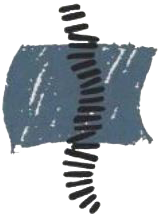Pain is at the core of human suffering, and the attempt to relieve pain is as old as human history. The methods used to relieve pain are limitless and run the gamut from snake oils and potions to magnetism and biofeedback.
Chiropractic care has been part of the pain relief family for more than 100 years, and yet there are all kinds of archival evidence of “bone-setters” and other cultural applications of chiropractic-like care dating back many hundreds and even thousands of years!
What is foundational to chiropractic pain relief is the Chiropractic Adjustment. The adjustment is the application of gentle physical forces into specific joint structures, primarily the spine, with the intent of improving biomechanical function. The consequence of improved biomechanical function includes improved range of motion and improved joint efficiency.
How does the brain process joint pain?
However, the primary and immediate effect of the adjustment is that it changes the neurological function of the joint.
What this means is that when a joint is not working properly, nerve receptors in and around the joint structure go into “protection mode”. That is, the nerve receptors initiate reflexes that limit the function of the joint, reduce range of motion, and in particular will cause tension (guarding) in the soft tissues – primarily muscle and tendon. It is, in many cases, the reflexive tension in the soft tissues that produces a great deal of the discomfort that chiropractors work to resolve.
Every chiropractor has worked with patients who comment that they feel like the pain is “in my muscles, not in my joint”. And, in a great number of cases, they are right!
However, the pain that is coming from the muscles is not because something is wrong in the muscles. In fact, the muscles are doing exactly what they are being told to do! The signal from the compromised nerve receptors in and around the joint is a call for “help”. The only way a muscle knows how to help is by going into tension or spasm. Treating the muscle will provide relief, but this will only be temporary.
The solution to the problem is to shut off the message that is telling the muscle to protect the joint. Correcting the biomechanical problem in the joint is the solution. The adjustment does exactly this, which relieves the demand on the nerve receptors and therefore, the signal to the muscle shuts off and the pain is relieved.
How long do chiropractic adjustments take to work?
Patients who have received chiropractic adjustments are very frequently amazed at the speed to which the adjustment can relieve pain. In some cases, patients with significant pain can experience immediate and complete relief from the delivery of an adjustment. When this occurs, it is because the entire pain effect that the patient is experiencing is coming from the compromised neurological signal emanating from the nerve receptors in the joint. Relieve the stress on the nerve receptors by correcting the joint biomechanics, and the pain can go away a quick as turning off a light!
What is the cause of the pain isn't in the joints?
Not all pain in the musculoskeletal system comes from the nerve receptors in the joint. Certainly, soft tissue pain can be a primary problem. The pain in the soft tissues can be because those tissues have been injured or have become reactive to a demand (like exercising harder than you should). In these cases, chiropractors are trained to apply a variety of soft tissue treatment techniques. These include Active Release Technique (developed by a chiropractor), as well as other applications that include, stretching, dynamic stretching, icing, and in some cases, the application of electrical modalities such as ultrasound.
Chiropractors do not prescribe medication. This is not part of the foundational philosophy of chiropractic care. However, many chiropractors are very well versed in the understanding of when a pharmaceutical product is appropriate and when it should be avoided – as it applies to the treatment of musculoskeletal pain. In fact, using non-drug based care is at the forefront of the attempt to solve the opioid crisis which has taken so many lives around the world.
If you are seeking pain relief, give our clinic a call and set up a consultation so that the problem can be discussed. Understanding the nature of the pain is the first step to successful resolution.

